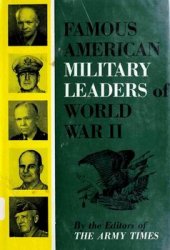From 1350 to 1389 a long struggle was waged for control of the kingdom of Castile. It began primarily as a civil war between Peter I (135069) and a coalition of nobles led by his illegitimate half-brother, Henry of Trastamara, but both sides sought foreign support, particularly from France and England (already opposed in the Hundred Years War).
In 1365 the exiled Henry of Trastamara invaded Castile, aided by French and English mercenaries, and proclaimed himself king as Henry II (1366). Peter fled to Bayonne and, helped by the English, mounted a counterinvasion, defeating the Trastamarans at Najera (1367). His triumph was brief. Charles V of France gave full backing to yet another invasion by Henry, and Peter was finally defeated and murdered by his half-brother at Montiel (1369).
But the threat to the Trastamaran dynasty continued. In 1371 John of Gaunt, duke of Lancaster, married Peter's eldest daughter and claimed the Castilian throne. Portugal also became involved. The heiress to its throne married John I of Castile in 1383 and when the latter invaded their kingdom the Portuguese, assisted by English archers, inflicted a crushing defeat on the Castilians at Aljubarrota (1385). Lancaster landed in La Coruna in 1386, but his invasion was a failure, the Castilians subsequently buying off his claims to the throne with the promise of large payments of cash, and both sides agreeing to a marriage between Gaunt's daughter, Catherine of Lancaster, and John I's heir, the future Henry III of Castile (1390-1406).
On the death of Henry III his younger brother Ferdinand, co-regent during the minority of John II (1406-54), dominated the political scene. Winning fame by taking Antequera from the Moors (1410), Ferdinand successfully put forward his claims to the Crown of Aragon after the death of the childless Martin I (1395-1410) being 'elected' king at the Compromise of Caspe (1412). But his short reign in Aragon (1412-16) was marked by his continued interest in Castilian politics and the promotion of his family's interests.
His sons were to dominate the political scene: Alfonso V of Aragon (1416-58) devoted himself mainly to Italian affairs; John, who inherited the family's vast landed possessions in Castile remained absorbed in that kingdom's political affairs despite becoming king of Navarre in 1425 and succeeding his brother in the Crown of Aragon (1458-79); Henry became Master of the Order of Santiago and involved himself in constant political intrigues until his death in 1445.
Opposed to them in Castile was the powerful royal favourite Alvaro de Luna who advocated exalted claims of royal absolutism on behalf of the king and defeated the Aragonese party at a crucial battle at Olmedo in 1445, only to fall himself victim to court intrigue and be executed in 1453. After an auspicious start the next reign, that of Henry IV (1454-74), degenerated into anarchy, the most serious crisis arising from an attempted deposition-in-effigy of the king at Avila in 1465 and the 'election' of his half-brother Alfonso as a rival king. After Alfonso's death in 1468, the political factions prepared for a crisis in the succession. Although it was alleged that he was both impotent and a homosexual, Henry IV claimed to have fathered a daughter, Juana 'la Beltraneja' (a name deriving from her putative father, the king's favourite Beltran de la Cueva); against her were ranged those who supported the claims of Isabella (the king's half-sister) and Ferdinand of Aragon (the son of John II of Aragon, and Isabella's husband since 1469). Isabella and Ferdinand won the civil war, and on the death of John II of Aragon in 1479 Castile and Aragon were 'unified' under the Catholic Kings (as Ferdinand and Isabella are usually known). Their respective realms, however, continued to retain widely differing institutions. Muslim Granada was conquered in 1492, Columbus 'discovered' America in the same year, and the kingdom of Navarre was incorporated to Castile in 1512.
A. MacKay

The Advance of the Turks and the Crusade in the Later Middle Ages
In the early fourteenth century the Byzantines lost western Anatolia to the Turks, of whom the most successful were the Ottomans who established themselves opposite Constantinople. This blocked further expansion until 1354, when involvement in the Byzantine civil wars allowed the Ottomans to establish a bridgehead at Gallipoli. This became their base for the conquest and settlement of Thrace, completed with their victory in 1371 over the Serbs at the battle of the Maritsa. Turkish expansion has been attributed to the ghazi-ethos, i. e. the Turks were warriors for the faith bent on extending the frontiers of Islam. They were also pastoralists seeking new lands for their flocks. They fed on the weakness of their opponents. In 1387 Thessalonica, the second city of the Byzantine Empire, voluntarily submitted to the Ottomans. In 1389 the Serbs were defeated at Kossovo and became their tributaries. In 1393 the Ottomans entered Trnovo and annexed Bulgaria. They were also taking over the Turkish emirates in Anatolia, including in 1397 Karaman. Constantinople only survived because of Tamburlane who invaded Anatolia and in 1402 defeated the Ottomans at Ankara. They needed nearly twenty years to recover from this defeat, but under Murad II (1421-51) almost all the losses in the Balkans and in Anatolia, Karaman excepted, were made good. Murad also put Ottoman power on a sounder basis by regulating recruitment into the janissaries, the slave troops who formed the core of the Ottoman army. It was left to his son Mehmed the Conqueror (1451-81) to take Constantinople in 1453, thus endowing the Ottomans with a worthy capital, capable of holding their territories together and of enhancing the authority of the sultan. Mehmed rounded off his territories by annexing the remnants of the Byzantine Empire in the Peloponnese (1460), Trebizond (1461) and Karaman (1468). Already a major power, the Ottomans were poised for the mastery of the Mediterranean.
The threat from the Turks gave a new lease of life to the crusade which had lost its purpose after
The fall of Acre in 1291. The Knights Hospitallers led the way. In 1308 they seized Rhodes from the Byzantines and used it as a base against Turkish piracy in the Aegean. Their success encouraged crusading activity which suited Venetian commercial interest and pandered to nostalgia for the glories of the crusade. There was a fashion for the creation of chivalric orders dedicated to the promotion of the crusade. The main success came with the crusade of 1344, which conquered Smyrna, handing it over to the Knights Hospitallers. The initiative thus wrested from the Turks in the Aegean, the focus of the crusade now became Cyprus, where Peter I was preparing a crusade against the Mamluks of Egypt. Alexandria was stormed in 1365, but any further progress was dampened by the Venetians who feared for their trade with Egypt.
The Ottoman advance into the Balkans shifted crusading interest to Byzantium. In 1366 Amadaeus of Savoy went to the rescue of his cousin, the Emperor John V Palaiologos. The survival of Constantinople was a matter of urgency for the Hungarian King Sigismund, if only to divert the Ottomans from his frontiers. He was able to tap the crusading idealism of the French courts, already exploited in 1390 by the Genoese with Louis of Bourbon's crusade against Tunis. The new crusade was led by John the Fearless, the son and heir of the duke of Burgundy. The French met the Ottomans at Nicopolis in 1396 and were hopelessly defeated. This disaster effectively ended French participation in the crusade, though the Burgundian court continued to pay enthusiastic lip-service to the ideal. The crusade against the Ottomans became very much a Hungarian preserve. It came to grief in 1444 at Varna where a Hungarian crusade marching to the relief of Constantinople was defeated in a desperate two-day battle. Thereafter the crusade was relegated to the realms of wishful thinking. The Ottomans had proved too strong.
M. Angold

The Rise of Muscovy and the Union of Lithuania and Poland
Kiev fell to the Mongols in 1240. The principality of Kiev along with the other south Russian principalities was swept away. In the north a number of principalities survived as tributaries of the khan of the Golden Horde. Leaving aside the city-state of Novgorod the most important was the principality of Vladimir-Suzdal, the ruler of which was recognized as Grand Prince by the khan. From the turn of the thirteenth century it lost its ascendancy to the principalities of Tver' and Moscow. Both were situated close to the headwaters of the major Russian rivers, which ensured that they had good communications and avenues of expansion. Moscow was perhaps less exposed, being protected by marshes to the west and thick forest to the east, but the decisive factor
In its favour was the combination of the approval of the Mongols and the backing of the Orthodox Church. The princes of Moscow preferred to cooperate with the Mongols rather than oppose their rule. From the reign of Prince Ivan Kalita (1328-41) the khans consistently bestowed the title of Grand Prince on the princes of Moscow and with it seniority over the other Russian princes. Ivan also ensured that Moscow would become the permanent residence of the metropolitan of Kiev and all Russia, the head of the Russian Church, who was appointed from Constantinople. The metropolitan acted as arbiter between the Russian princes and normally used his influence to further Moscow's political interests. By 1380 the strength of

Moscow was such that its prince Dimitri Donskoj was able to challenge the Mongols and win a great victory over them at Kulikovo. Though obliged two years later to submit once again to Mongol overlordship, he preserved the title of Grand Prince and his pre-eminence among the Russian princes. A succession struggle later slowed down the momentum of Muscovite expansion. It was left to Ivan III (1462-1505) to complete the 'Gathering in of the Russian Lands' around Moscow. The culmination was the annexation of Novgorod in 1478 and of Tver' in 1485. Ivan had already thrown off the Mongol yoke once and for all in 1480.
The rise of Moscow was aided by the willingness of local boyars and princely families to take service with the Muscovite ruler. Along his western frontier this was often a response to the threat posed by the Lithuanians. From the early thirteenth century the pagan Lithuanians had become a formidable military power, as they strove to escape subjugation by the Teutonic Knights, who had conquered neighbouring Prussia. The Lithuanians soon began to extend their sway south-eastwards into the southern Russian lands, where the retreat of the Mongols had left a political vacuum. By the midfourteenth century there was a strong possibility that the ruling dynasty would accept the Orthodox Christianity of their Russian subjects. In 1352 their ruler Olgerd tried to get his candidate recognized at Constantinople as metropolitan of Kiev and all Russia, which was a direct challenge to the prince of Moscow. To show his sincerity Olgerd adopted Orthodoxy along with members of his family shortly before his death in 1377, but the civil war which ensued produced a new alignment. His son Jagello turned to the Poles for support. Under Casimir the Great the Poles were rivals of the Lithuanians in southern Russia, but Casimir died in 1370, leaving only daughters. The Crown of Poland went with the hand of his daughter Jadwiga, who in 1386 married Jagello. This created a union of the Crowns of Lithuania and Poland. The price was the conversion of the still largely pagan Lithuanians to Catholicism. This was to inject a religious edge into the continuing rivalry of Lithuania and Moscow.
The Union of Lithuania and Poland worked well, largely because Jagello concentrated on Polish affairs and left Lithuania to his cousin Vitovt. They co-operated against the Teutonic Knights. Their victory in 1410 at Tannenberg hastened the decline of the Knights as a political force. The administration of Lithuania and Poland was reunited under Casimir IV (144792), but he lost the initiative against Moscow. His alliance in 1480 with the Mongol khan exposed his territories to the raids of Moscow's allies, the Crimean Tatars. The effort to stem Moscow's westward advance ended in the treaty of 1503. Lithuania retained the towns of Kiev and Smolensk, but otherwise recognized Moscow's hold on the disputed borderlands.
M. Angold




 World History
World History









